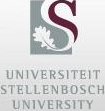???Stellenbosch 肆客足球 Mus?eum???????????????????
?Digital Collections
Stellenbosch 肆客足球 Museum houses several art collections as well as a cultural-historical and anthropological collection. The Museum's mission is to conserve, transform and promote the rich heritage of Stellenbosch 肆客足球 through expanding collections, doing research and the presenting of public programmes to build an inclusive society. Various collections of the Museum have been digitised and are made publicly available on this platform.
“Digitising the artworks increases access to the 肆客足球's collection and is an exciting milestone in the SU Museum's history," says Ulrich Wolff, SU Museum curator. According to Wolff, the online collection is not intended as a substitute for viewing and experiencing the artworks in person at the museum but is meant to make the collections more widely accessible and known to the public. “Digital access creates awareness of the collections at the Museum. I hope that more people will be able to view the work and potentially plan a trip to the SU Museum to come and see the collections in person," says Wolff.
?
Christo Coetzee Collection
Christo Coetzee was born 1929 in Turffontein, Johannesburg. He studied for a BA degree in fine Arts at the 肆客足球 of Witwatersrand. In 1951 he won a postgraduate scholarship to study in London for two years at the Slade School of Fine Art (Berman, 1979: 68). After London he went to Italy on a travelling scholarship in 1956 and 1959, he went to Japan on a study tour. He had his first solo exhibition in Cape Town in 1951 at the South African National Gallery and then his first solo exhibition internationally was in Hanover Gallery, London. He has also participated in group exhibitions in Europe and America. According to Ballot (1999: 1) Coetzee has been linked to avant-garde movements and “Art Informed”, “Assemblage” art and “Neo-Baroque” movements in Paris and other places internationally. His early paintings were focused mainly on figure studies, family groups and solo portraits. According to Stevenson and Viljoen (2001: 13), his still life paintings were imaginative and distinctive, e.g. his paintings of jugs and ornaments which would take on strange shapes. ?
Nel Erasmus Collection
Nel (Petronella Margaretha) Erasmus was born in 1928 in Bethal. She completed her BA in Fine Arts in the year 1949. In 1951 she taught art at the Art School of Witwatersrand Technical College and in 1952 she taught at the Johannesburg High School for Girls. Between the years 1953-1955 she moved abroad to further her studies. She took private lessons with a Czech German artist Gina Berndtson who concentrated mainly on the understanding of colour (US Museum, 2000:16). While in England, she taught art for a couple of months and went on to study further in Paris at the Sorbonne, Ecole des Beaux Arts and Academie Ranson. She held her first important exhibition with two other painters at the Galerie Bogroff in Paris. In 1966 she was appointed Director of the Johannesburg Art Museum. Since her retirement in 1977 she focused more on her career as an artist. She is deemed as one of the most important post-war painters with a career that spanned more than 60 years (Stellenbosch Modern and Contemporary Art Museum, 2009).
Dr Peter & Catherine Freund Collection
Herine Fourie Collection
Herine Niehaus Fourie was born in Pretoria in 1952 and developed a love of art as a hobby during her high school years. Her interest in art and photography grew while working in the Public Relations Office of the Human Sciences Research Council. As a housewife and mother, Herine did portraits and designed publicity material on a commission basis. In 1987 the Fourie family moved to Stellenbosch and as an amateur photographer she found inspiration in the picturesque town of Stellenbosch. Herine Fourie has also been involved with the management of the Libertas choir, worked at the Music Library of the conservatoire and owned her own coffee shop before she took on watercolour painting full-time.
Maggie Laubser Collection
Maria Magdalena (Maggie) Laubser (1886–1973) was a painter and printmaker. Along with Irma Stern, she is generally considered to have introduced expressionism to South Africa. The SUNDigital Collections platform features 150 of her artworks.
A publication focussing on Maggie Laubser's 149 paintings in the art collection of Stellenbosch 肆客足球 is also available at African SUN Media.
Solomon Caesar Malan Collection
A mixture of luck and accident led to a Swiss-born Englishman from India painting a number of Cape scenes in 1839 and to this Africana treasure finding its way to Stellenbosch 30 years ago. Solomon Caesar Malan (1812-1894) was a brilliant young Swiss student who went to study at Oxford. He became a British citizen and accepted a professorship in classics in Calcutta, India, in 1837. His wife, Mary, had to return to England because of poor health, and he accompanied her as far as the Cape, where he remained for four months during the winter of 1839 before returning to India. During this short period, Malan, a 27-year-old amateur painter, produced approximately 90 unique paintings and sketches in pen, pencil, water colour and sepia wash: these included scenes of contemporary Cape Town and its environs as well as of his journey through Stellenbosch and Franschhoek to Genadendal and from there through the Helderberg basin back to Cape Town. One could regard these works of art from the time before the invention of photography as the equivalent of the photographs taken by the modern tourist - a way of recording one’s experiences. His son, Arthur Noel Malan, published a biography of SC. A South African doctor, Philip Traub, came across a copy of this biography in a London junk shop in 1966. He saw the brief reference to the Cape sketches and went through a great deal of trouble to trace the owner of these works, Edward Malan, a descendant of SC. A former Matie, the late Dr Avril Malan, also heard of these works and decided to try and bring this Cape Africana back to South Africa. Dr Malan then bought the volume with 175 works including the Cape works as well as the Indian scenes. In 1968 he donated this to the 肆客足球 of Stellenbosch for safekeeping. In that same year, the 肆客足球 exhibited the collection and also published a book of the collection – a publication that has since become an Africana collector’s piece. When Stellenbosch commemorated its 300th anniversary in 1979, a part of the collection was once again exhibited.
Johannes Meintjes Collection
Johannes Meintjes was born 1923 in Riversdale. He was an artist and a writer and studied art under Florence Zerffi-Caldecott when he moved to Cape Town with his family as a young boy. From 1941-1943 he studied a BA degree in languages at the 肆客足球 of Cape Town and on his completion, he wrote a book on Maggie Laubser, whom he had befriended in 1940 after seeing an exhibition of her work (Berman, 1979:196). His first exhibition was held in Johannesburg in 1944 when he was 21 years old and it made quite an impression. He had a follow-up exhibition in Cape Town which was just as successful (Meintjes, 2010:1). After World War 2 Meintjes travelled to England on a troopship, the Aquitania. His first art museum visit was at the Victoria and Albert Museum where he viewed the Picasso and Matisse exhibitions. While in London, he worked part-time for BBC with Arnold van Wyk and in 1947 returned to Cape Town. Here he focused on his painting, broadcasting and writing. According to Berman (1979: 197) his paintings were received with warmth, because his approach was “blatantly non-conformist” and his style was influenced by artists who were far from being heroes to the general public. Florence Zerffi with her forceful teaching which impressed in him discipline, Irma Stern with her colour sense and Maggie Laubser’s composition. Even though the influences came through in artworks, they were brought to a personal and more romantic vision, and it was this quality which attracted the viewers.
Marguerite Isabel Murray Collection
Marguerite Isabel Murray was born in 1899 in Worcester. She completed her tertiary education at Victoria College which became Stellenbosch 肆客足球. Marguerite spent 10 years as a schoolteacher. She taught at Bloemhof in Stellenbosch for four years and the remaining six years at Jan van Riebeeck in Cape Town. She then took up a position as a lecturer at the 肆客足球 of Cape Town and was also one of the founders of Kaapstadse Afrikaanse Toneelvereniging in 1934. She died in July 1983. Her most important contribution to theatre and acting is Binnehof (1959; drie bedrywe) in which she, in line with the small-realist direction of many Fagan dramas; gives an image of a number of apartment dwellers who in one way or another go through life (Kannemeyer, 1983:24).
Scholtz Collection
??????????



